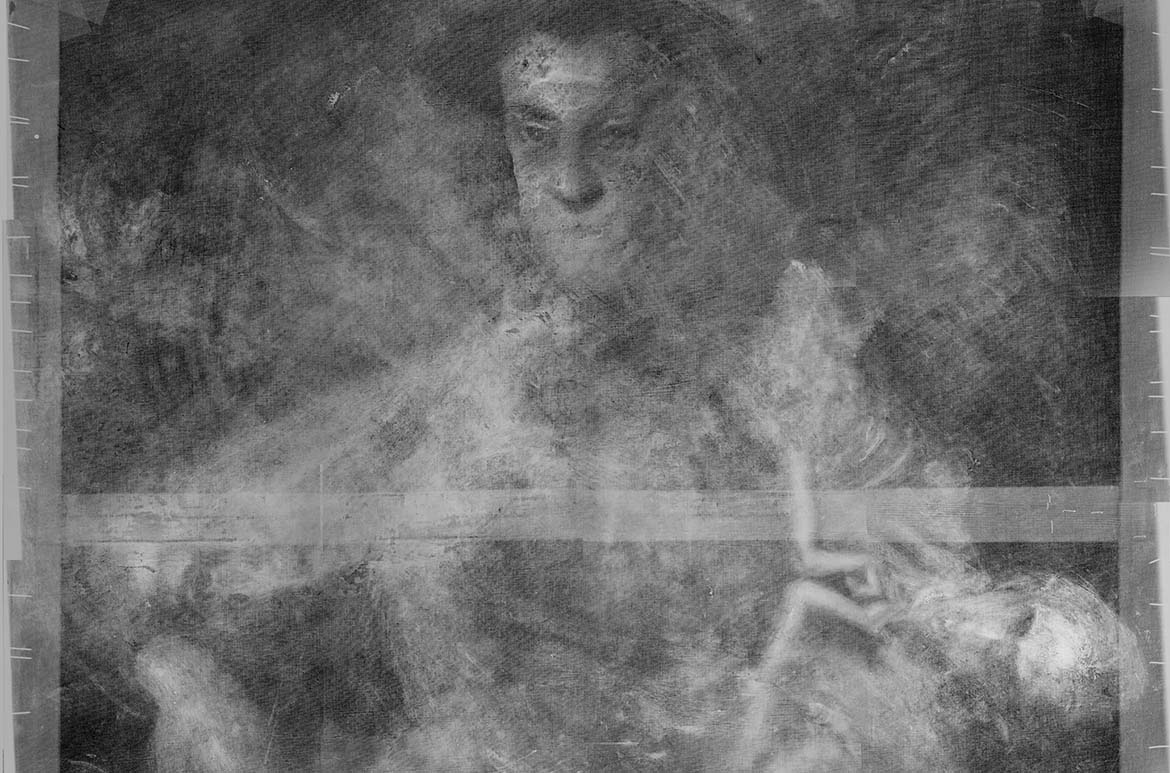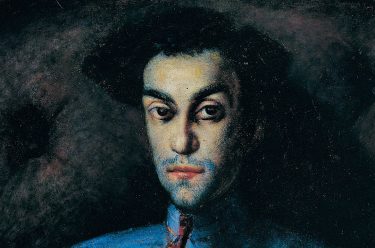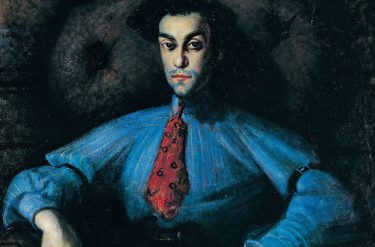William Dobell (1899-1970) is an artist recognised for his portraits and for often embellishing his sitter’s appearance to draw out their most distinctive traits. The model for The Cypriot 1940 was Aegus Gabrielides, a Greek Cypriot waiter who worked in a London café frequented by Dobell and his fellow Slade School students in the 1930s.
Go behind-the-scenes and watch as we delve into the secrets once hidden behind The Cypriot. There is a lot more to the painting than meets the eye — all hidden from view under the surface — until the Gallery x-rayed the painting.
RELATED: The life and art of William Dobell
Go behind-the-scenes with Anne Carter, QAGOMA Paintings Conservator
X-ray of ‘The Cypriot’
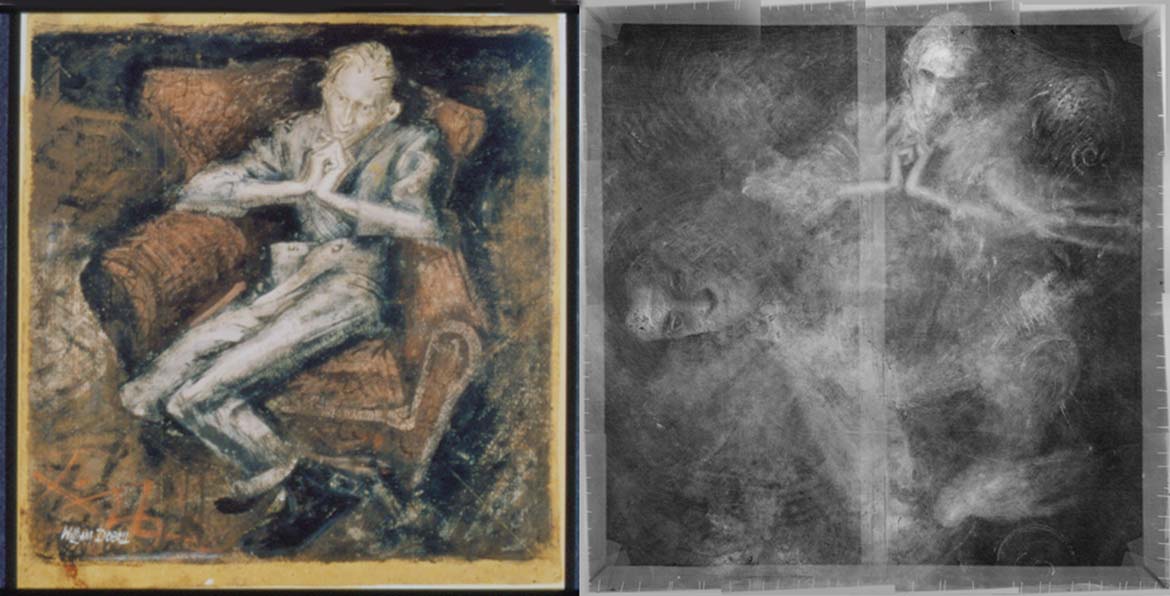

The Cypriot
William Dobell returned to Australia in 1938 with a number of sketches of Aegus Gabrielides, described by the artist as a ‘very quiet sort of chap, well mannered, very lazy, harmless individual’. Yet, in this final version of the portrait, painted in Sydney, Dobell has given Gabrielides an intense and determined presence. Dobell’s choice of title and the transition from the sketches to the final painting shift the focus from the individuality of the sitter to his Greek heritage and Cypriot nationality. Painted before the period of post-war immigration from Europe, a time when the blue of a Mediterranean ‘five o’clock shadow’ was still unfamiliar to many Australians, The Cypriot is as much a depiction of cultural difference as it is a portrait of an individual.
William Dobell Study for the painting ‘The Cypriot’
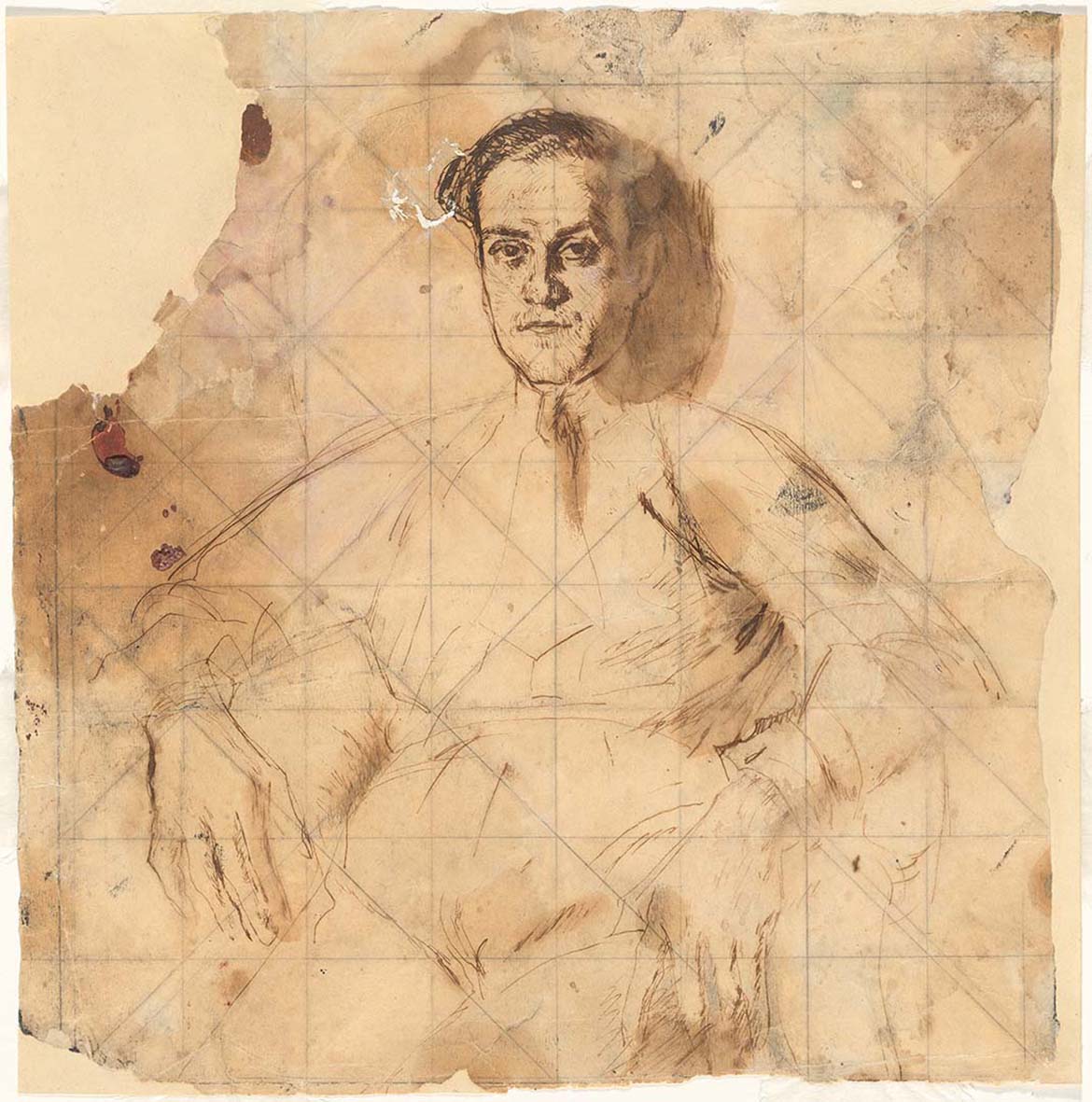
William Dobell ‘The Cypriot’
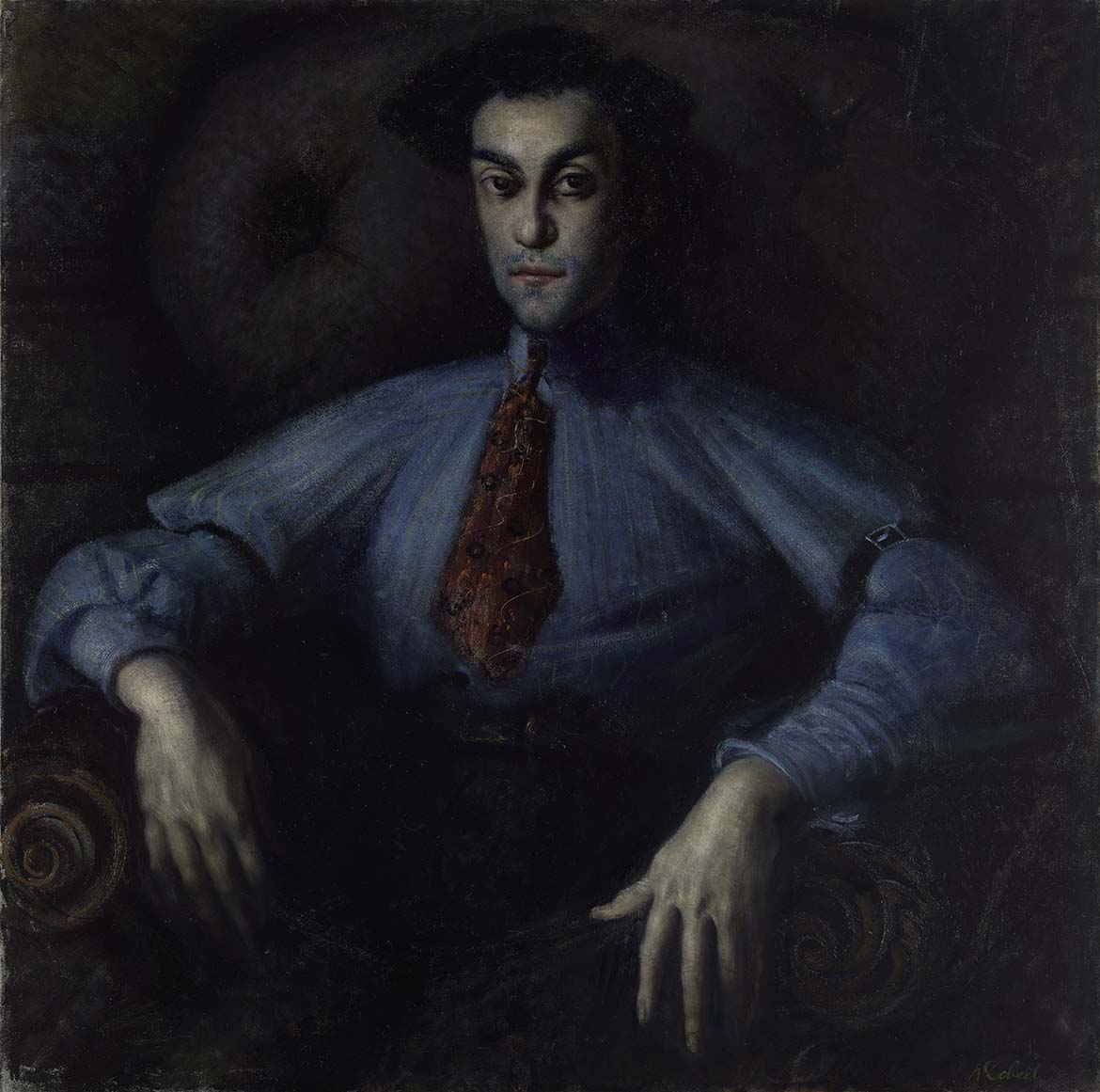
‘Conservation of Dobell’ video is based on research by John Hook (former Senior Conservator, QAGOMA) who examined this painting using X-radiography, prepared all paint cross sections and discovered most of the changes described. Hook, J., Substance and Spirit, William Dobell’s “The Cypriot”, Brought to Light – Australian Art 1850 – 1965, QAG, 1998.
Featured image detail: Radiographic images of William Dobell’s The Cypriot 1940
#QAGOMA
